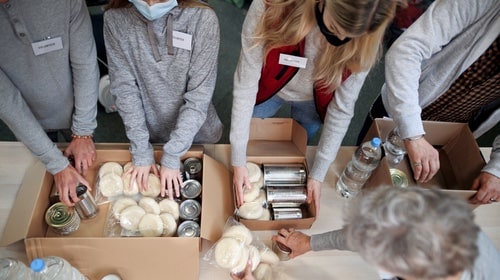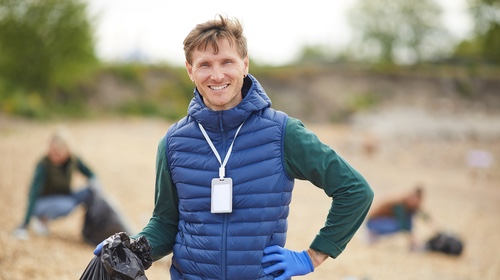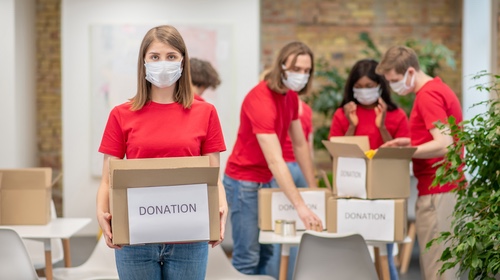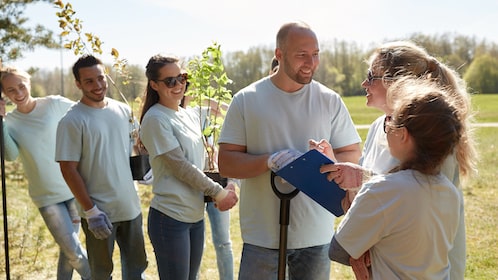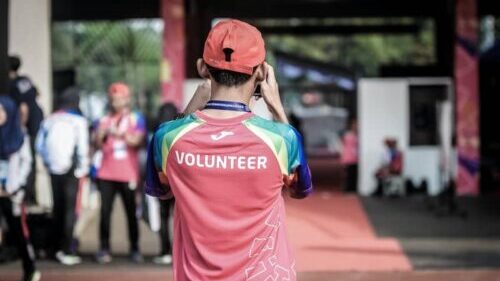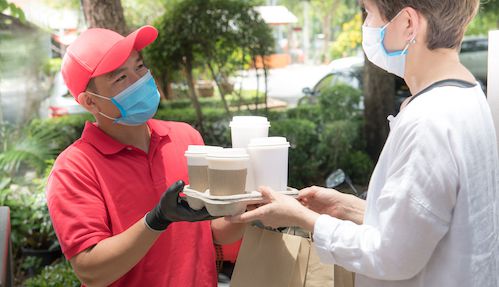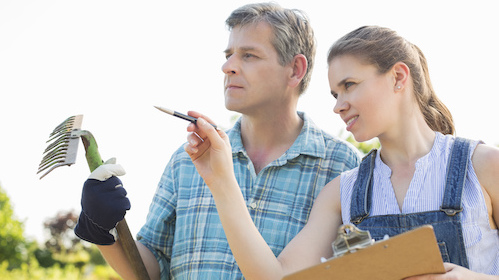How to Stay Safe While Volunteering
Authored by:
iClick2Learn Team
Translate Text
Due to the nature of some volunteer work you might be in situations that are a little unfamiliar. So being aware of safety issues and being able to self-assess how safe you are is going to be important in changing environments.
Due to the nature of some volunteer work, you might be in situations that are a little unfamiliar. So being aware of safety issues and being able to self assess how safe you are, is going to be important in changing environments. The organisation you’re volunteering for should have a risk management plan, and at least be able to identify and explain the risks you’re likely to encounter along with proactive ways and strategies and actions they take to minimise the risks. An example for volunteers to be aware of in terms of risk, is that if you ask somebody to help you to do something that’s connected with your volunteering role, that other person, if they’re not an approved volunteer, you could actually be putting their safety at risk, and should something happen, they may not be covered under volunteer insurance.
So, you can see how important it is to make sure that you know what risks are involved, but also to know that approved volunteers for the organisations are the ones that are covered under that organisation’s volunteering insurance. You know, it’s pretty easy to be unloading something at home and ask your son or your wife or your daughter to give you a hand, but if they’re not an approval volunteer, you’re putting them at risk. Incident reports, in the event of an incident occurring, as a volunteer, you might be required to complete a report documenting what actually happened. Now, there’s nothing to be alarmed about, it’s standard procedure and best practise, but your ability to clearly and accurately recall what happened is going to be a great benefit, so make sure you get that recorded as soon as possible. There are many lessons to be learned from looking at what went wrong in a situation, and this can result in innovation and important improvements to processes. So there are a couple of things in mind when you’re completing an incident report.
Firstly, as we said, time is of the essence. So your memory is best immediately after it’s occurred, so document it as soon as possible. Also, be very well aware of the difference between objective and subjective thinking. So, making assumptions about something versus stating the actual fact or documenting your observations of what happened, the perceived state of mind of others, for example, can’t be included in your report, only your observation of the actions they took. Volunteer insurance. Responsibility for staying safe is shared between the volunteer, the organisation they volunteer for, the employees and the other volunteers around them. So what if something happens to you while you’re volunteering? Well, since 2012, the Australian government has recognised the importance of volunteer safety through workplace health and safety laws. So whether you’re a volunteer employee, you’re protected by the same laws, and you should be advised during the induction what insurance the volunteer holds for you in your role as a volunteer. So be sure to ask them specifics about volunteer insurance, importantly, what it covers and what it doesn’t cover.
During the course of your volunteer role, you may be asked to use vehicles, equipment, or perhaps even handle chemicals. So as you reduce the risk of injury, it’s important that you are appropriately trained and you have enough information, instructions and protection to carry your role out safely. For example, if the role requires the use of a fire extinguisher as a fire warden, this would include showing you how to actually use the fire extinguisher, someone demonstrating the process from beginning to end, also information about risks for that equipment and how to minimise those risks. For example, how to hold the nozzle so the spray doesn’t get onto your skin, and any protective personal clothing or personal protective equipment, PPE for short, that you might wear to minimise the risk of the chemical spray landing on your skin or in your eyes.
So no matter what role you have, you should know where the first aid facilities or the medical kit is located, and the procedure for reporting hazards, near misses and incidents, and any emergency procedures for the site. So let your manager or volunteer coordinator know immediately if you’re unsure of how to use equipment or materials safely, it’s your joint responsibility to make sure that you and others are kept safe.
The organisation you’re volunteering for should have a risk management plan, and at least be able to identify and explain the risks you’re likely to encounter, along with proactive ways, and strategies and actions they take to minimise the risks.
An example for volunteers to be aware of, in terms of risk, is that if you ask somebody to help you to do something that’s connected with your volunteering role, that other person, if they’re not an approved volunteer, you could actually be putting their safety at risk, and should something happen, they may not be covered under volunteer insurance.
So you can see how important it is to make sure that you know what risks are involved, but also to know that approved volunteers for the organisations are the ones that are covered under that organisations volunteer insurance. You know, it’s pretty easy to be unloading something at home, and ask your son, or your wife, or your daughter, to give you a hand. But if they’re not an approved volunteer, you’re putting them at risk.
Incident Reports. In the event of an incident occurring as a volunteer you might be required to complete a report documenting what actually happened. Now, there’s nothing to be alarmed about. It’s standard procedure and best practise but your ability to clearly and accurately recall what happened is going to be a great benefit. So make sure you get that recorded as soon as possible.
There are many lessons to be learned from looking at what went wrong in a situation, and this can result in innovation and important improvements to processes. So there are a couple of things in mind when you’re completing an incident report. Firstly, as we said, time is of the essence. So your memory is based immediately after it’s occurred so document it as soon as possible.
Also, be very well aware of the difference between objective and subjective thinking. So making assumptions about something versus stating the actual fact or documenting your observations of what happened. The perceived state of mind of others, for example, can’t be included in your report only your observation of the actions they took.
Volunteer insurance. Responsibility for staying safe is shared between the volunteer, the organisation they volunteer for, the employees and the other volunteers around them. So what if something happens to you while you’re volunteering? Well, since 2012 the Australian Government has recognised the importance of volunteers safety through workplace health and safety laws.
So whether you’re a volunteer or employee, you’re protected by the same laws. And you should be advised during the induction what insurance the volunteer holds, for you in your role as a volunteer. So be sure to ask them specifics about volunteer insurance. Importantly, what it covers and what it doesn’t cover.



